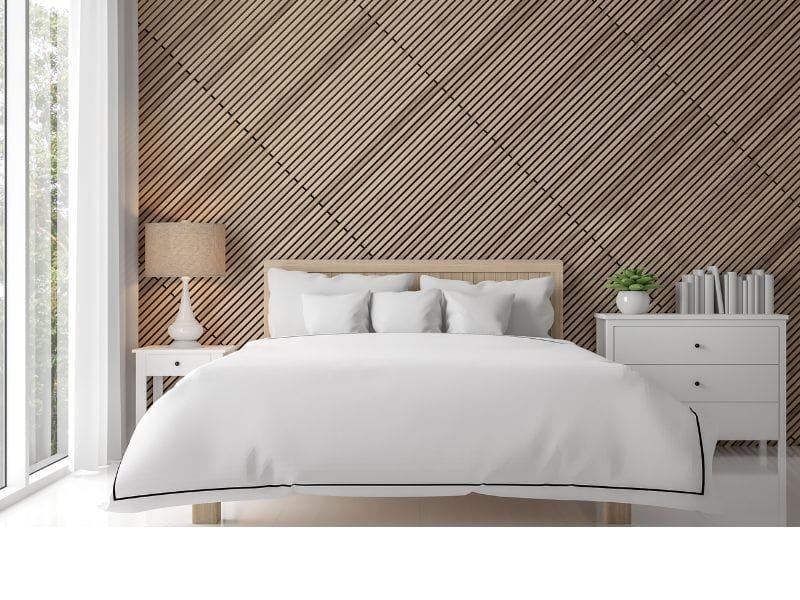Identifying and Avoiding Toxins in Upholstered Furniture
From our early days, we’ve sought to make our interiors safe and inviting havens. Yet, the materials we rely on may harbor toxic chemicals that can impact our health, which also applies to upholstered furniture.
Although completely eliminating harmful substances from our homes can be challenging, staying informed and making conscious choices is key. This guide highlights common toxins in furniture, their health impacts, and safer alternatives to help you create a healthier, toxin-free living space.
Why Choosing Non-Toxic Furniture Matters
Demanding safer products is essential to drive market change. While non-toxic furniture might cost more initially, the investment pays off in invaluable health benefits. By advocating for stricter standards and supporting sustainable brands, you contribute to a healthier environment for your family and the planet.
(For a curated selection of eco-conscious brands offering cleaner & safer products, we invite you to explore our shop page.)
Breaking Down Upholstered Furniture Components
Upholstered furniture typically consists of these elements:
- Foam and filling
- Batting
- Fabric or cover
- Frame
Additionally, adhesives, stains, and varnishes are commonly used on furniture. Each component may involve harmful chemicals with potential health risks. Below, we explore these components, key concerns, and practical steps to minimize exposure.
1. Foam & Filling in Upholstery
Furniture cushioning often uses foam, down feathers, polyester fiber, or springs, which affect comfort, durability, and overall feel. For instance:
- Foam provides firmness.
- Down feathers offer a softer, more luxurious touch.
However, many cushioning and fabric materials can contain harmful chemicals that pose health risks:
- Flame Retardants: Added for fire safety but linked to hormonal imbalances, developmental delays, and cancer.
- PFAS (Stain & Water Resistance): Common in treated fabrics, PFAS can lead to thyroid disruption, immune suppression, and organ damage.
- Polyurethane Foam: Often off-gasses VOCs (volatile organic compounds), causing respiratory irritation and indoor air pollution.
- Antibacterial/Antimicrobial Treatments: Found in synthetic materials and may include chemicals like triclosan (phased out), silver nanoparticles, quaternary ammonium compounds, and copper-based additives.
How to Minimize Exposure
To reduce risks, prioritize the following:
Foam and Fillings:
- Avoid foam with flame retardants by checking labels for terms like “Flame retardant treated” or compliance with flammability standards.
- Opt for natural materials such as organic cotton, wool, or natural latex, which emit fewer VOCs.
Fabrics:
- Steer clear of upholstery labeled “stain-resistant,” “water-repellent,” or “antibacterial,” as these finishes often indicate PFAS or antimicrobial treatments.
- Choose untreated, natural fabrics for safer options.
Certifications:
- Look for certifications like CertiPUR-US (low VOC foam), GREENGUARD (low indoor air pollutants), OEKO-TEX, and GOTS (safer materials).
Safer Alternatives
When selecting furniture, choose:
- Flame Retardant-Free Materials: Products labeled “flame retardant-free,” “non-toxic,” or “chemical-free.”
- PFAS-Free Upholstery: Upholstery made from natural or untreated fabrics.
- Natural or Organic Fillings: Cushion fillings like organic wool, cotton, or natural latex derived from rubber tree sap, known for low VOC emissions.
Certifications to Ensure Safety
To ensure healthier furniture choices, look for:
- CertiPUR-US: Low VOC foam emissions.
- GREENGUARD: Reduced indoor air pollution.
- OEKO-TEX and GOTS: Safer, organic textiles.
- FSC (Forest Stewardship Council): Responsibly sourced wood.
Products could also indicate labels such as:
- Flame retardant-free
- Non-toxic
- No PBDEs
2. Batting In Upholstered Furniture
Batting adds a soft, cushioning layer between the foam and fabric. It adds extra cushioning, smooths out the surface, and enhances the furniture’s softness and comfort. While often made from synthetic materials, it’s another common source of flame retardants and chemical treatments.
- Flame Retardants: Similar to those in foam, flame retardants used in batting are linked to endocrine disruption and immune suppression.
- PFAS (Stain & Water Resistance): Batting treated with stain-resistant or water-resistant chemicals may contain PFAS, which can negatively affect thyroid function and cause organ damage.
- Synthetic Additives: Synthetic batting materials can off-gas VOCs, worsening indoor air quality and contributing to air pollution.
Safer Alternatives
To minimize exposure to harmful chemicals in batting materials, consider the following safer options:
- Flame Retardant-Free: Prioritize furniture labeled as “flame retardant-free” or “non-toxic.”
- PFAS-Free: Look for products specifically marked “PFAS-free” to avoid these harmful chemicals.
- Natural Batting: Opt for furniture with natural batting materials, such as organic cotton, wool, or natural latex, which are free from chemical treatments.
- Avoid Chemical Treatments: Be cautious of labels like “stain-resistant,” “water-repellent,” or “odor-resistant,” which often indicate synthetic chemical finishes.
Certifications to Look For
Certifications can help identify products that are safer and more environmentally friendly. For natural batting materials, check for:
- GOTS (Global Organic Textile Standard): Ensures organic and eco-friendly production processes.
- OEKO-TEX Standard 100: Confirms that textiles are free from harmful substances.
- USDA Organic: Guarantees that materials like cotton or wool are organically sourced.
Note: Synthetic batting typically lacks these certifications due to the prevalence of chemical treatments in the industry.
3. Fabric Or Cover On Upholstered Furniture
The fabric that wraps your furniture is often treated with chemicals to resist stains, water, or bacteria. Unfortunately, these treatments come with health concerns.
Healthier Fabric Choices
To minimize exposure to harmful chemicals, consider opting for natural, untreated fabrics and certified options:
- PFAS-Free Fabrics: Look for upholstery that is labeled “PFAS-free” or untreated with harmful chemicals.
- Natural Textiles: Choose fabrics like organic cotton, linen, or hemp, which are naturally breathable and durable.
- Flame Retardant-Free: Prefer fabrics that are labeled “flame retardant-free” to avoid the risks associated with flame retardants.
- Avoid Antibacterial and Antimicrobial Treatments: Be cautious of fabrics marketed as “stain-resistant,” “water-repellent,” or “odor-resistant,” as these can be chemically treated.
- Synthetic Fabrics: Be mindful of synthetic fabrics with a glossy, stiff, or plastic-like feel, as they are likely chemically treated.
Natural Fabric Options to Consider
For a healthier and more sustainable choice, select fabrics made from natural materials:
- Organic Cotton: Grown without synthetic pesticides; it is soft, breathable, and durable.
- Hemp: Known for strength, absorbency, and sustainability.
- Linen: Ideal for hot climates; crisp, cool, and durable.
- Recycled Fabrics: Consider fabrics made from recycled materials such as Tencel, Modal, or Recycled Polyester. These options are often free from chemicals and more environmentally friendly.
Key Certifications and Labels to Look For
Check for reputable certifications to ensure safety and sustainability:
- GOTS (Global Organic Textile Standard): Certifies organic and eco-friendly production processes.
- OEKO-TEX Standard 100: Ensures textiles are free from harmful substances.
- USDA Organic: Guarantees materials like cotton or wool are organically sourced.
4. Frame Of Upholstered Furniture
Furniture frames are typically constructed from wood, composite materials, or metal, often sealed with varnishes or adhesives. These can release toxins into your home over time.
Frames made of engineered wood are often bonded together using formaldehyde-based adhesives.
Additionally, finishes and coatings may contain substances such as VOCs (volatile organic compounds), flame retardants, and even heavy metals like lead and mercury. These chemicals are known to off-gas, affecting indoor air quality and potentially contributing to respiratory problems, headaches, and long-term health issues.
Key Chemicals to Watch Out For:
- Formaldehyde: Found in adhesives and composite woods (like MDF and particleboard), it releases gas and worsens indoor air pollution.
- VOCs: Emitted by finishes, glues, and coatings, VOCs can irritate respiratory systems and lead to long-term health concerns.
- Flame Retardants: Such as TRIS and PBDEs, often added to furniture finishes, they’re associated with developmental issues and hormone disruption.
- Heavy Metals: Lead and mercury can sometimes be found in coatings and finishes, posing serious health risks, especially for children and pregnant women.
Choosing Safer Alternatives
To ensure a healthier environment, focus on minimizing the exposure to harmful chemicals used in frames and finishes.
- Solid Wood Frames: Opt for untreated, solid wood for the frame of your furniture. It’s a natural, durable option that’s free from chemical treatments, making it the safest choice. Look for certifications like FSC (Forest Stewardship Council) to ensure the wood is sustainably sourced.
- Engineered Wood: If you prefer engineered wood (MDF or particleboard), choose products made with formaldehyde-free adhesives or those that meet lower-emission standards like CARB Phase 2 certification.
- Low-VOC and Water-Based Finishes: Select finishes that are low in VOCs or entirely water-based, as they release fewer harmful chemicals. Brands offering options like General Finishes High Performance Water-Based Topcoat are great examples. These finishes are both effective and safer for your home’s air quality.
- Natural Finishes: For an eco-friendly, non-toxic option, go for natural oils like tung oil, linseed oil, or olive oil. These finishes not only protect the wood but are also free from harmful chemicals.
- Non-Toxic Glues and Coatings: Choose adhesives that are free from formaldehyde and solvent-based compounds. Plant-based and water-based glues are safer options that are free from harsh chemicals and less likely to off-gas harmful fumes.
What to Avoid in Frames, Finishes, and Resins
Certain materials, while commonly used in furniture manufacturing, should be avoided for the sake of health and indoor air quality:
- Resins: Many composite woods use urea-formaldehyde or melamine-formaldehyde resins, which release formaldehyde into the air. Opt for furniture that uses natural resins like beeswax, linseed oil, or tung oil for finishes that are safe and non-toxic.
- Flame Retardants: Look for products without flame retardants, such as TRIS or PBDEs, which are linked to long-term health effects. Check labels for terms like “flame-retardant-free.”
- Metal Finishes: For metal frames or parts, choose those with powder-coated finishes that are free from toxic chemicals.
Certifications to Ensure Healthier Furniture
Certifications provide an excellent way to verify that your furniture meets stringent safety and environmental standards:
- GreenGuard: Look for this certification, which ensures low emissions of harmful chemicals in furniture and building materials.
- Green Seal: Offers assurance that the furniture has low toxicity and meets environmental standards.
- FSC Certification: Ensures wood products are sourced sustainably, which supports both forest ecosystems and healthier living environments.
- Safer Choice (EPA): Identifies safer chemical ingredients in furniture.
- CARB Phase 2: Ensures low formaldehyde emissions from engineered wood products.
- BIFMA Level: Signifies that the furniture meets rigorous sustainability and safety standards.
Additionally, look for labels that guarantee non-toxic materials like CertiPUR-US for foam, OEKO-TEX for textiles free of harmful substances, and GOTS (Global Organic Textile Standard) for organic fabric certification.
The Impact of Toxic Chemicals on Health and the Planet: A Comprehensive Overview
When it comes to creating a healthy living environment, understanding the dangers of the chemicals commonly present in everyday items is essential. These chemicals, which can be found in furniture, flooring, paints, textiles, and insulation, can negatively affect both our health and the environment. The following chemicals are among the most prevalent in homes and workplaces, and their associated risks are significant:
Volatile Organic Compounds (VOCs) Health Risks: VOCs can irritate the eyes, throat, and respiratory system, triggering asthma symptoms, shortness of breath, and dizziness. Long-term exposure may lead to liver and kidney damage, as well as certain types of cancer.
Environmental Impact: VOCs contribute to both indoor and outdoor air pollution, affecting not only human health but also contaminating ecosystems. These chemicals can also affect the climate by contributing to the formation of smog.Formaldehyde Health Risks: As a known human carcinogen, formaldehyde is a significant health risk, linked to respiratory problems (coughing, wheezing, shortness of breath), skin irritation, allergic reactions, and worsened asthma. It also weakens respiratory defenses, making one more susceptible to respiratory infections.
Environmental Impact: Formaldehyde, being a volatile compound, easily leaches into the air, contributing to indoor air pollution. It is also a significant environmental concern when it enters water sources during manufacturing or disposal processes.Flame Retardants Health Risks: Flame retardants disrupt the endocrine system, affecting thyroid function and leading to hormonal imbalances. They have also been linked to cognitive issues, particularly in children, and reproductive health problems such as infertility and developmental delays.
Environmental Impact: As these chemicals degrade over time, they contaminate indoor air and dust, and can persist in the environment, negatively impacting ecosystems. They are known to be persistent organic pollutants (POPs), meaning they don’t break down easily, accumulating in wildlife and posing risks to biodiversity.Phthalates Health Risks: Known for disrupting the endocrine system, phthalates can alter hormone levels and affect the reproductive system. They are also associated with an increased risk of asthma, allergies, and some forms of cancer.
Environmental Impact: Phthalates leach into the air, soil, and water, where they can accumulate in aquatic life and affect ecosystems. Their persistent nature makes them a long-term pollutant, impacting both wildlife and human communities.Lead and Other Heavy Metals Health Risks: Lead exposure is most harmful to children, causing developmental delays, brain damage, and behavioral issues. For adults, lead can cause kidney damage, elevated blood pressure, and reproductive toxicity. Other heavy metals, like mercury and arsenic, can also affect the nervous system, liver, and cardiovascular health.
Environmental Impact: Lead and heavy metals contribute to soil and water pollution, impacting ecosystems and posing severe health risks to wildlife and humans alike, especially in contaminated agricultural areas.Asbestos Health Risks: Inhalation of asbestos fibers is directly linked to respiratory conditions such as asbestosis, lung cancer, and mesothelioma. Asbestos exposure has also been associated with a weakened immune system, leading to increased susceptibility to infections.
Environmental Impact: Asbestos contamination is dangerous for wildlife when it enters ecosystems through building demolition or improper disposal. Due to its resistance to degradation, asbestos can persist in the environment for long periods.PFAS (Per- and Polyfluoroalkyl Substances) Health Risks: PFAS, often found in stain-resistant fabrics and nonstick cookware, are linked to various health issues, including liver damage, thyroid dysfunction, and developmental effects on children. They are also associated with higher cholesterol levels, immune system dysfunction, and certain cancers (e.g., kidney and testicular cancers).
Environmental Impact: PFAS are “forever chemicals,” meaning they do not break down over time. They have been found in drinking water, wildlife, and agricultural land, causing widespread contamination. Their persistence in the environment makes them a long-term ecological threat.Polyurethane Foam Health Risks: Polyurethane foam is associated with respiratory irritation and skin allergies. The foam often contains VOCs and flame retardants, both of which contribute to long-term exposure to harmful airborne chemicals. People with sensitivities may experience discomfort such as itching or breathing difficulties.
Environmental Impact: The manufacturing and disposal of polyurethane foam significantly contribute to environmental pollution. The production relies on petrochemicals, increasing carbon emissions and contributing to climate change. When improperly disposed of, polyurethane foam can pollute landfills and release harmful substances into nearby ecosystems.
Point of Alignment
Make Informed Choices for Healthier Homes and a Sustainable Planet
Creating a healthier living space starts with making informed decisions. By choosing furniture and materials free from toxic chemicals like formaldehyde, VOCs, and flame retardants, you’re building an environment that nurtures both your well-being and the planet. Go for solid, untreated wood, low-VOC finishes, and natural alternatives for glues and coatings. And keep an eye out for certifications like GreenGuard, FSC, and CARB Phase 2 to ensure the materials meet high safety and environmental standards.
When you understand the risks of harmful chemicals, it’s easier to prioritize non-toxic, sustainable alternatives. Natural fibers, low-emission paints, and flame-resistant materials all contribute to a safer, more eco-friendly home. These choices not only improve your health but also help reduce your ecological footprint, paving the way for a cleaner, more sustainable future.
Simple, intentional steps—like selecting products free from phthalates, flame retardants, and PFAS, or opting for VOC-free furniture and insulation—can have lasting, positive effects. By staying informed and making these mindful choices, we ensure our homes remain healthier sanctuaries, free from toxins that can harm our bodies, future generations, and the Earth.
REFERENCES
- Environmental Protection Agency. (n.d.). Our Current Understanding of the Human Health and Environmental Risks of PFAS.
- Agency for Toxic Substances and Disease Registry. (n.d.). Per- and Polyfluoroalkyl Substances (PFAS) and Your Health.
- National Institute of Environmental Health Sciences. (n.d.). Perfluoroalkyl and Polyfluoroalkyl Substances (PFAS).





